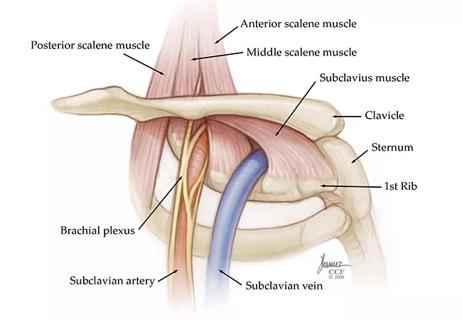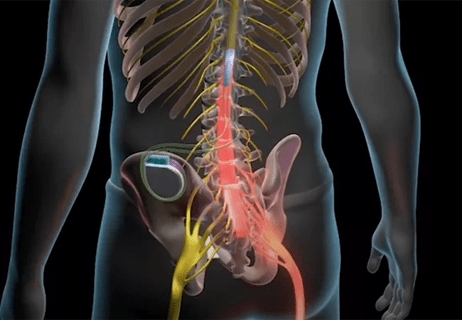The Four Pillar Project provides physicians with evidence-based talking points to quickly identify problem areas and educate patients to optimize important aspects of their health.

Cleveland Clinic’s Four Pillar Project is a newly created program that attempts to simplify and establish a base of treatment and education for pain patients. The pillars include sleep, stress management, appropriate diet as well as exercise.
Advertisement
Cleveland Clinic is a non-profit academic medical center. Advertising on our site helps support our mission. We do not endorse non-Cleveland Clinic products or services. Policy
“The reason that we’re trying this project is that we have a very limited time that we can spend with patients during their pain management appointments, and we’re developing an educational program for patients where we can speak to these things in a very direct way,” says Teresa Dews, MD, the president of Cleveland Clinic’s Euclid Hospital and one of the creators of the project. “The project will include supportive information and materials for the patients, such as videos and pamphlets, which provide basic education for the patient, but then we can also move on to more in-depth education.”
The project was created mostly through conversations about the importance of incorporating wellness into patient care. These conversations also included challenges physicians face, including the challenge of having a comfort level as far as what to tell patients and how to relay information to patients. Although Dr. Dews has been speaking with her patients about wellness for over ten years, she didn’t feel that what she was telling them was being absorbed by her patients. Part of this had to do with a lack of consistent patient communication about the importance of wellness when patients saw different doctors. She, along with the program’s other developers, felt that there was more that they could do to provide and reinforce consistent messaging to their patients.
“For physicians, it is really about giving them evidence-based sound bites that they can use with their patients in an efficient, high quality manner,” says William Welches, DO, PhD, a staff physician in Cleveland Clinic’s Department of Pain Management, and another creator of the project. “Doctors really want to talk to their patients about these health aspects, it’s just that it can be challenging to keep up with the right information, as well as packaging it in a way or in a manner that’s relatable by the patients. On the other side of this, we have to learn ways of efficiently getting information that we need from the patient in order to be able to effectively help them.”
Advertisement
Dr. Dews notes that the reception to the program has been overwhelmingly positive — both from physicians and patients. But it gives physicians the tools to be able to communicate the message more effectively and consistently with patient. Prior to the project, a patient could go to a physician who would make a diagnosis and recommendations for the problem the patient presented with, but not discuss any health or wellness recommendations. But another doctor might discuss health information depending on the patient’s medical history or the physician’s comfort level with discussing that aspect of the patient’s health.
“What we’re hoping for is that every physician has these tools and can direct the patient by telling them, ‘here’s the base of your treatment, and we’re going to help you focus on becoming a healthier person with these are four buckets that you can work on over time to treat your pain,’” explains Dr. Dews. “By having this as a one-liner along with supportive information, it is more approachable for the physician to convey that information, it’s more approachable for the patients to act on it and incorporate it into their treatment.”
The four pillars include focusing on improving sleep, exercise, diet and stress management. These pillars are all related to wellness, so Dr. Dews notes that improving one pillar will have a positive effect on the others. For example, if a patient increases his or her activity level and exercise, that can help decrease pain, relieve stress, and improve sleep quality.
Advertisement
Dr. Welches notes that while the pillars are complementary, patients are not expected to focus on improving all of them at once. “Focusing on all four is overwhelming,” he says. “When I tell patients about the pillars, I just tell them very simply these are the four things you want to think about over time, and just pick one to work on. Through my conversation with the patient, I’m usually able to pick up on what area is more challenging for that particular patient, because the patients are going to tell you. In my practice, a common problem is diet. I usually start by admitting that this is a challenge for myself and that diet is a big goal. I describe my own approach to this: divide and conquer. I describe the diet we promote (anti-inflammatory diet). I again use the notion that we can break down the goal into steps. For example, you can begin with eating more fish and less red meat.
The program also takes a multi-disciplinary approach and relies on referrals to sleep-specialists, nutritionists, mental-health professionals and others. This is why having everyone on the same page in regard to wellness and the program is so vital. If the primary care physician talks about the importance about wellness, but the referred physician doesn’t take that approach, then the primary care physician’s message isn’t as strong and the referred physician’s treatment isn’t as effective.
“This project isn’t doing anything groundbreaking,” says Dr. Dews. “The innovation here is simply recognizing how difficult it is to have conversations about wellness with patients, figuring out ways to make the conversation easier and more consistent and then incorporating that into our care. What I think we will find is that the things that we’re talking about are applicable across almost every medical specialty and sub-specialty. As we prove our concept, what I would love to see is that eventually, someone can go into their primary care doctor and their primary care doctor could say ‘You’re here to see me for this. These are some other things that we want to make sure that you keep in mind as you’re taking care of yourself. Here’s some information that you can go to in order to get more information about these things.’ These are evidence-based steps, and they are the basis for health promotion.”
Advertisement
Advertisement

Researchers seek solutions to siloed care, missed diagnoses and limited access to trauma-informed therapies

Study participants also reported better sleep quality and reduced use of pain medications

Two-hour training helps patients expand skills that return a sense of control

Program enhances cooperation between traditional and non-pharmacologic care

National Institutes of Health grant supports Cleveland Clinic study of first mechanism-guided therapy for CRPS

Pain specialists can play a role in identifying surgical candidates

Individual needs should be matched to technological features

New technologies and tools offer hope for fuller understanding